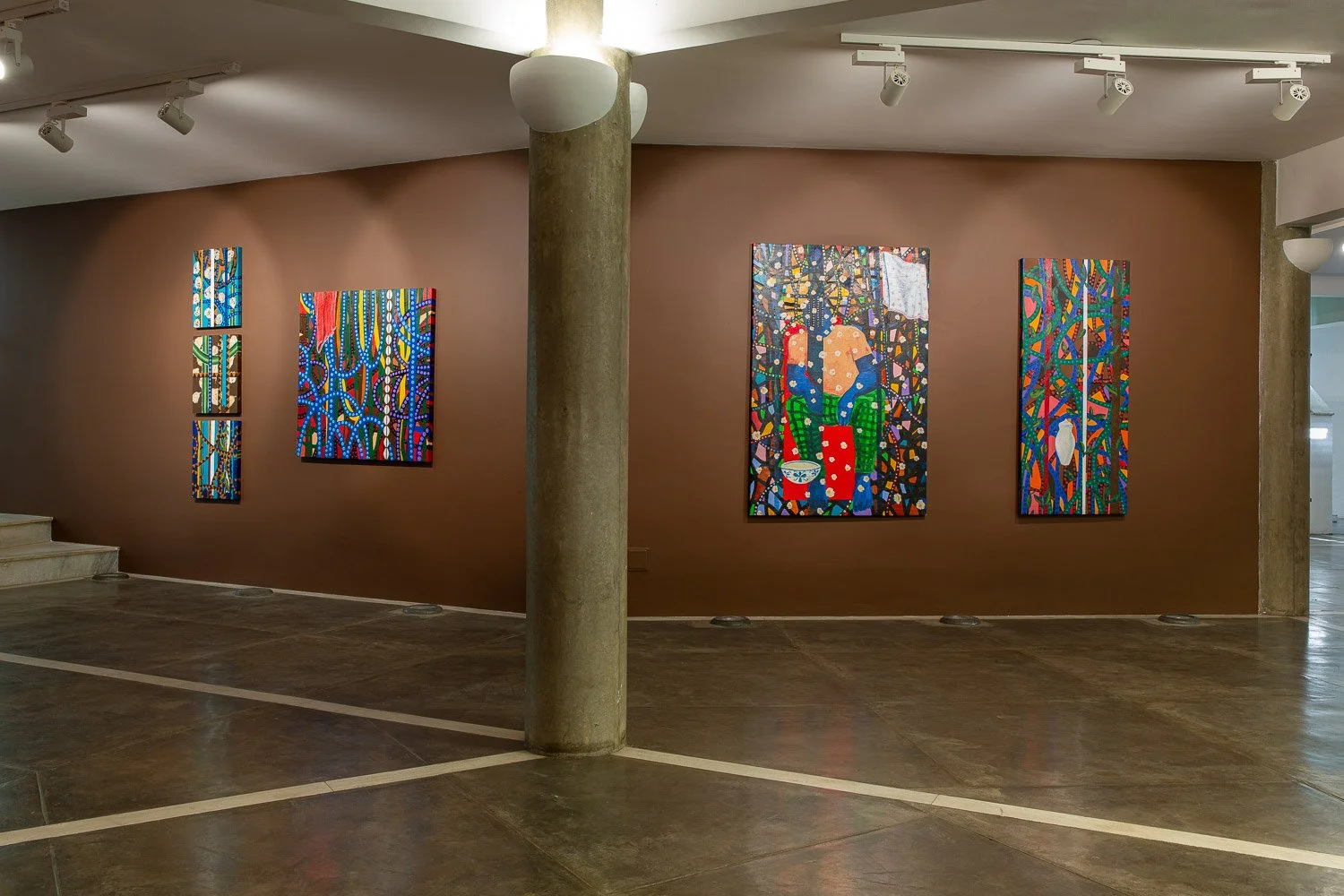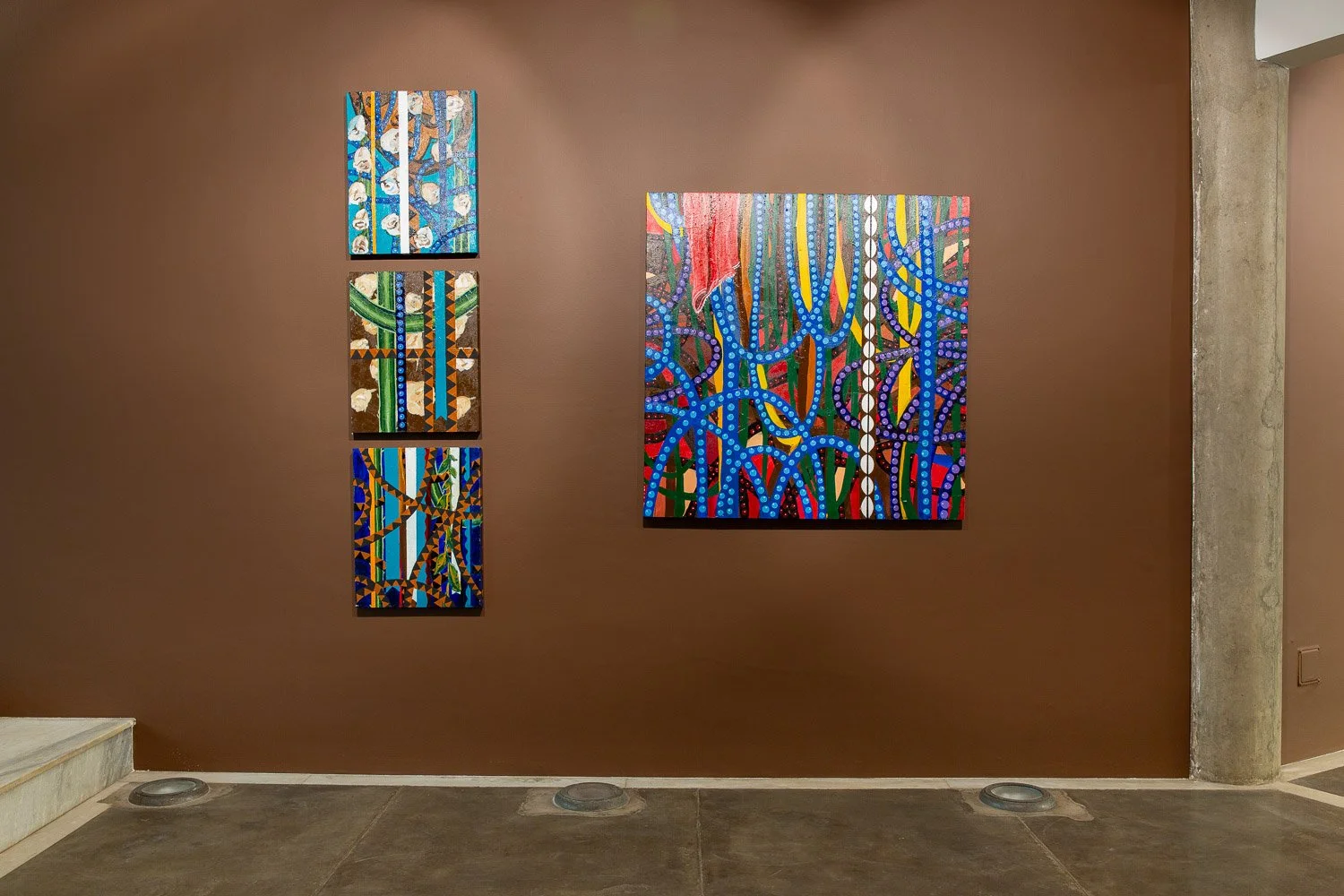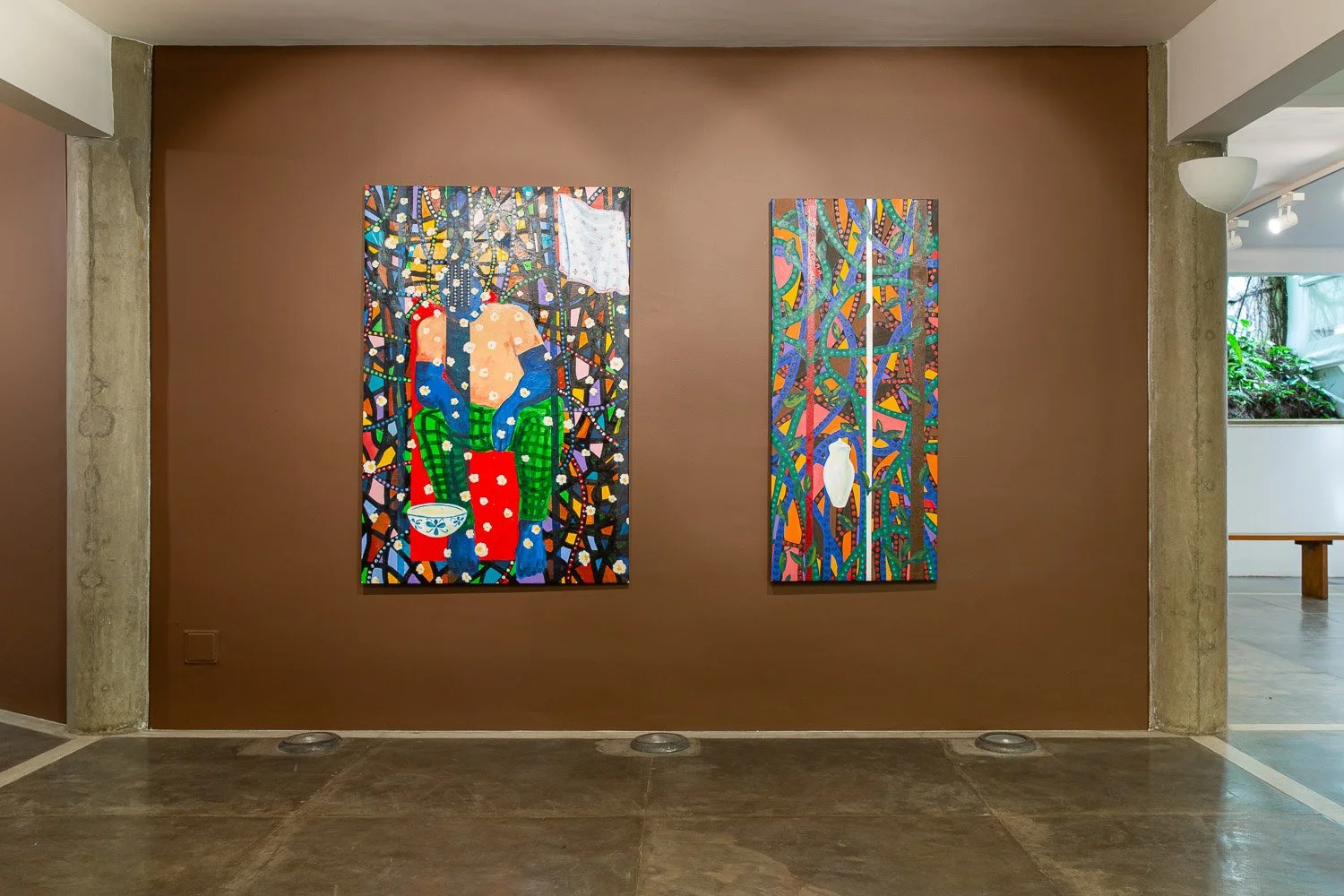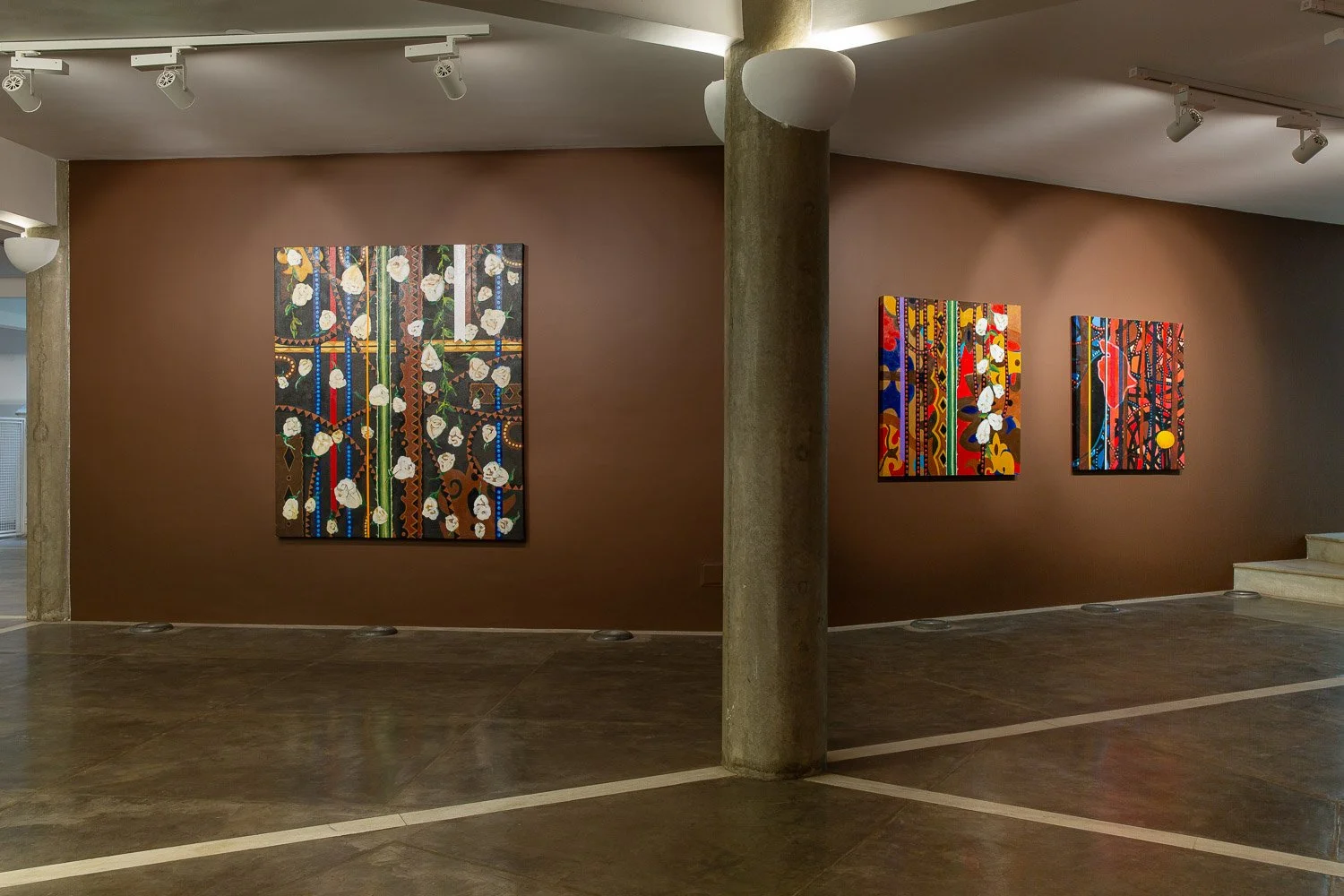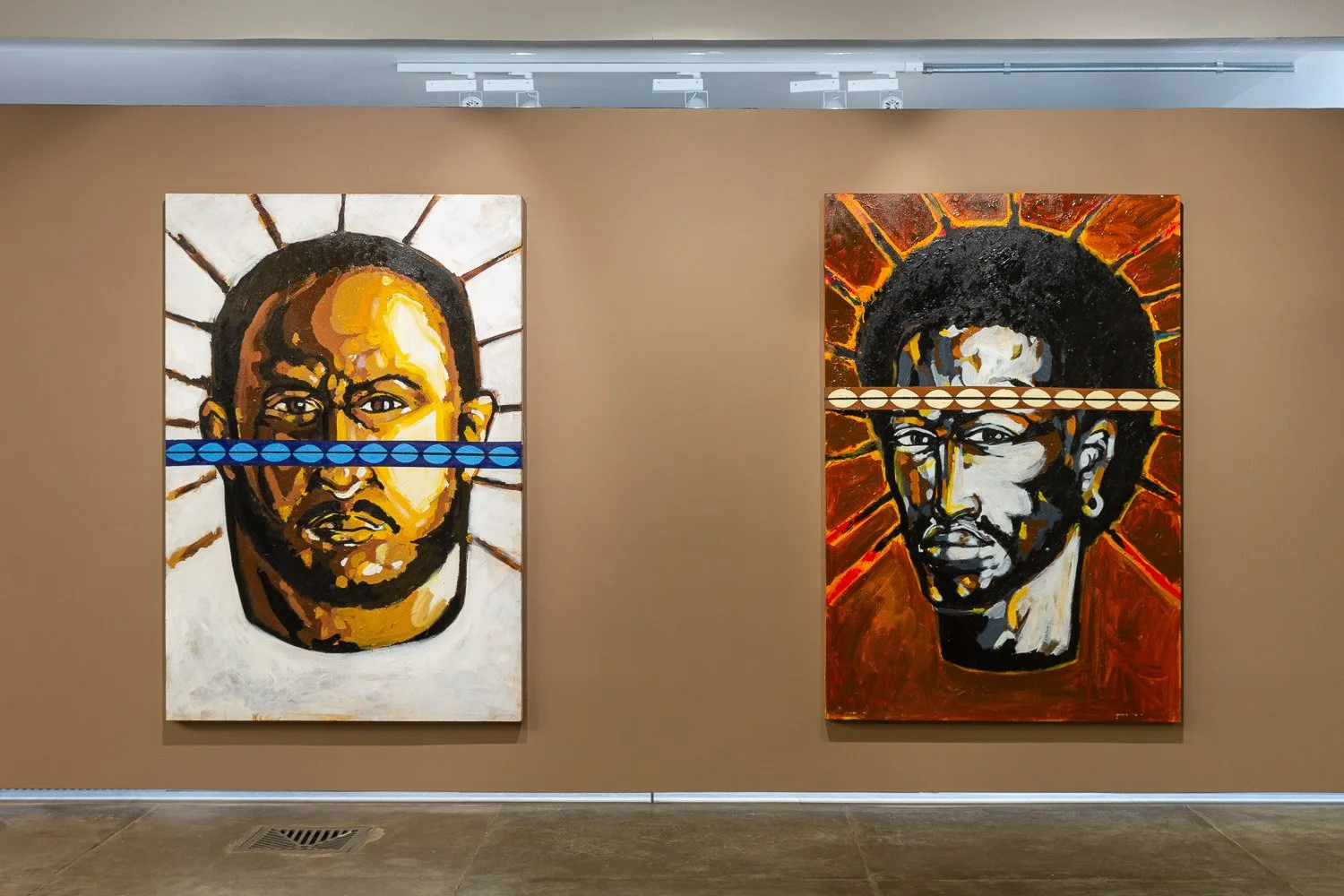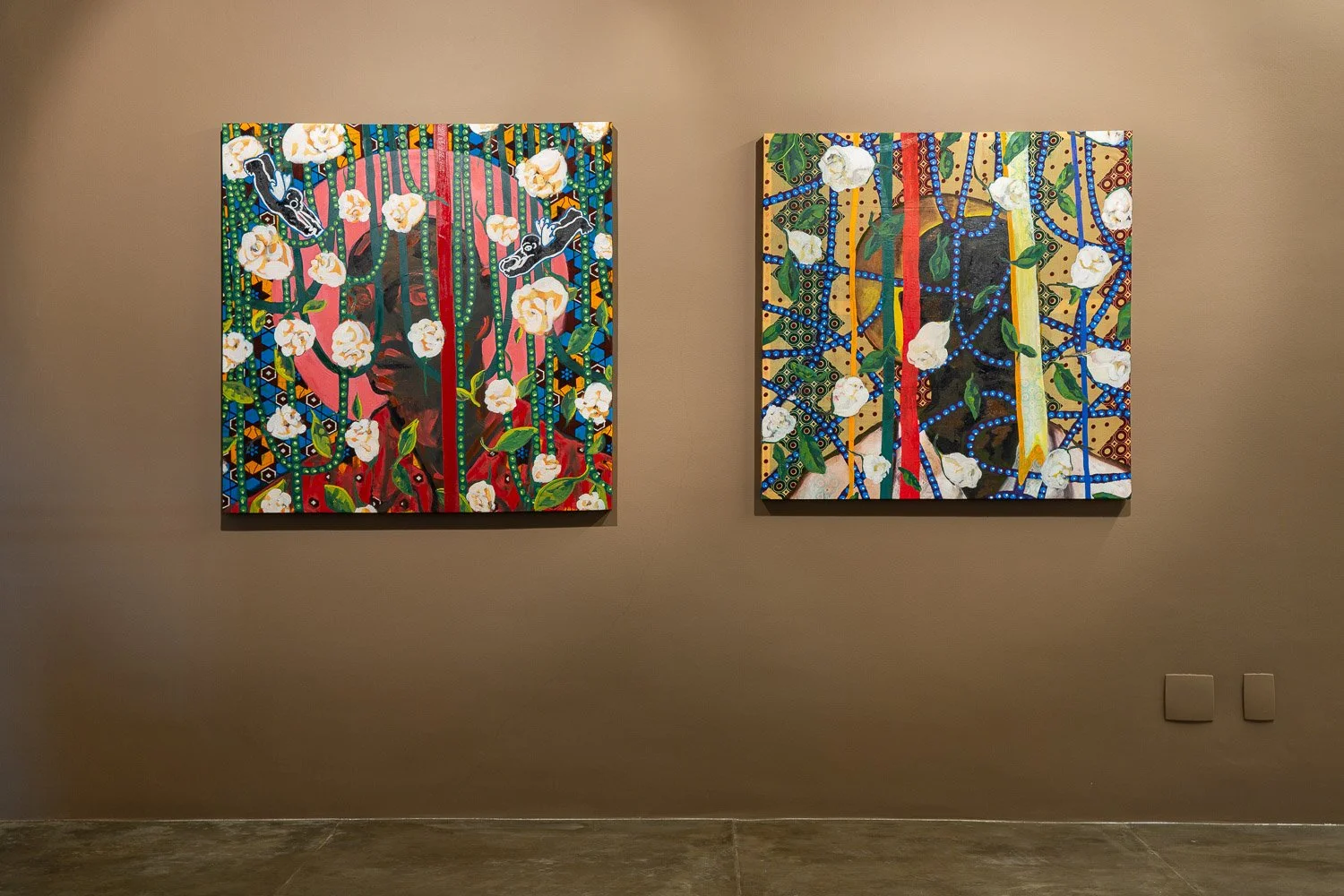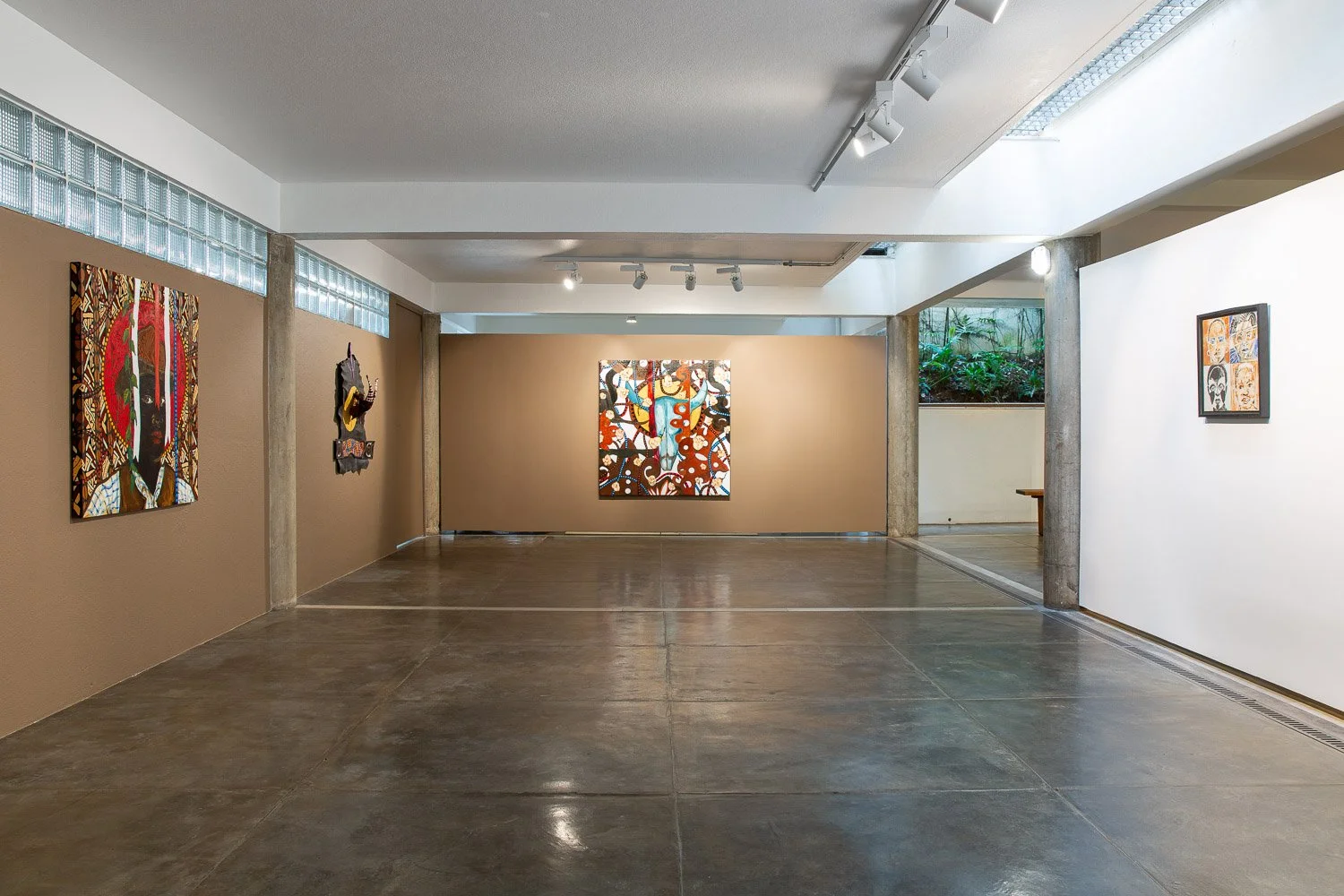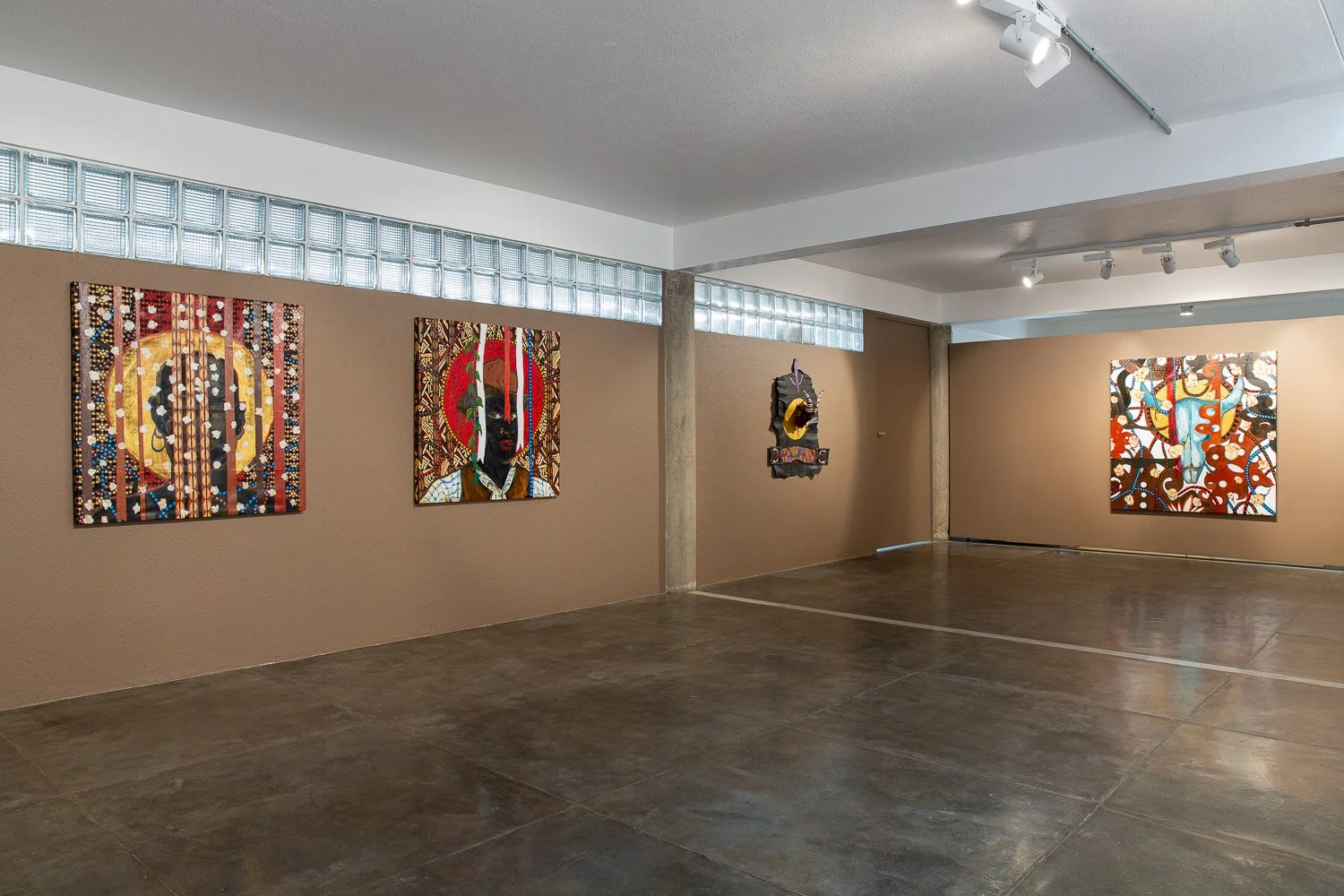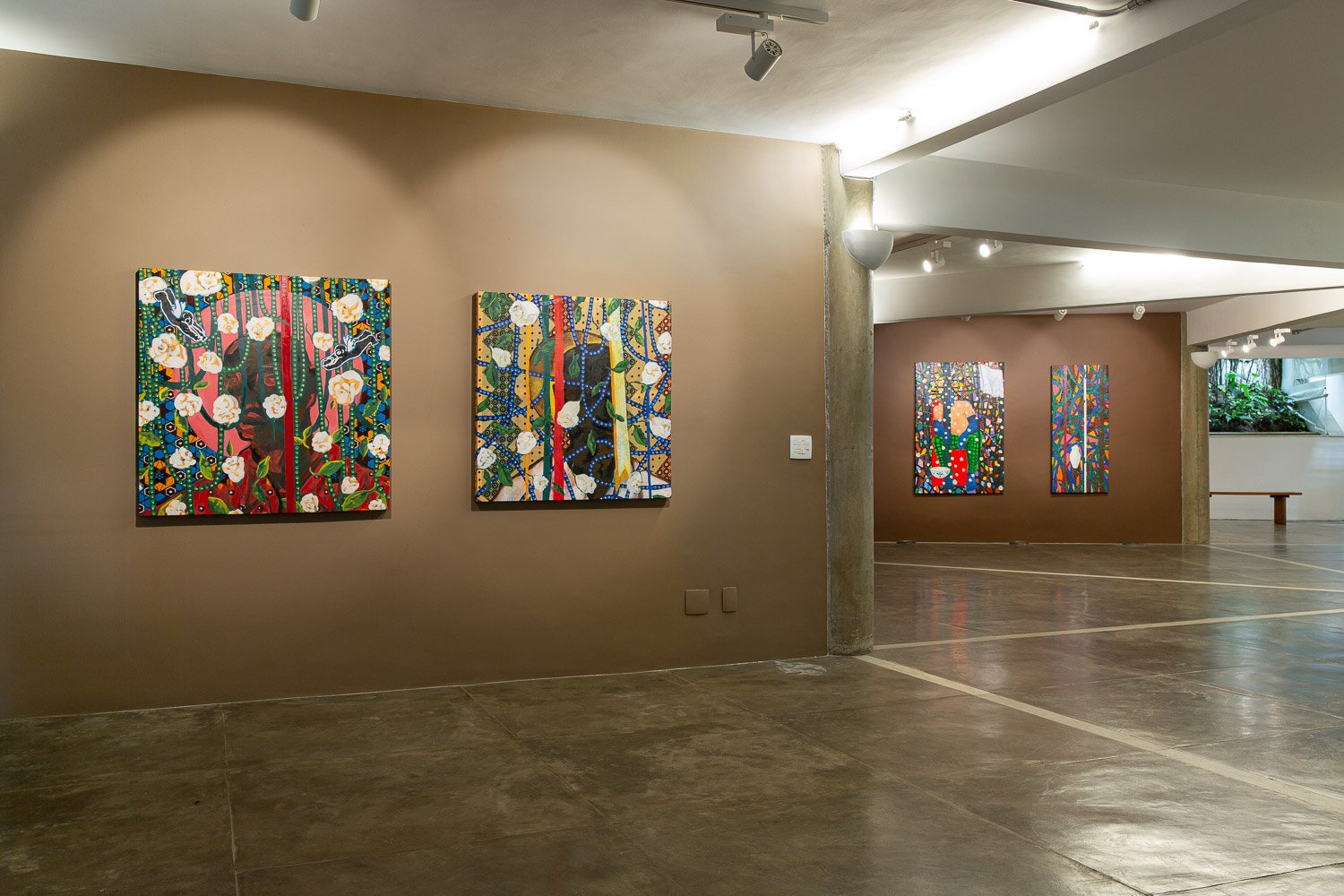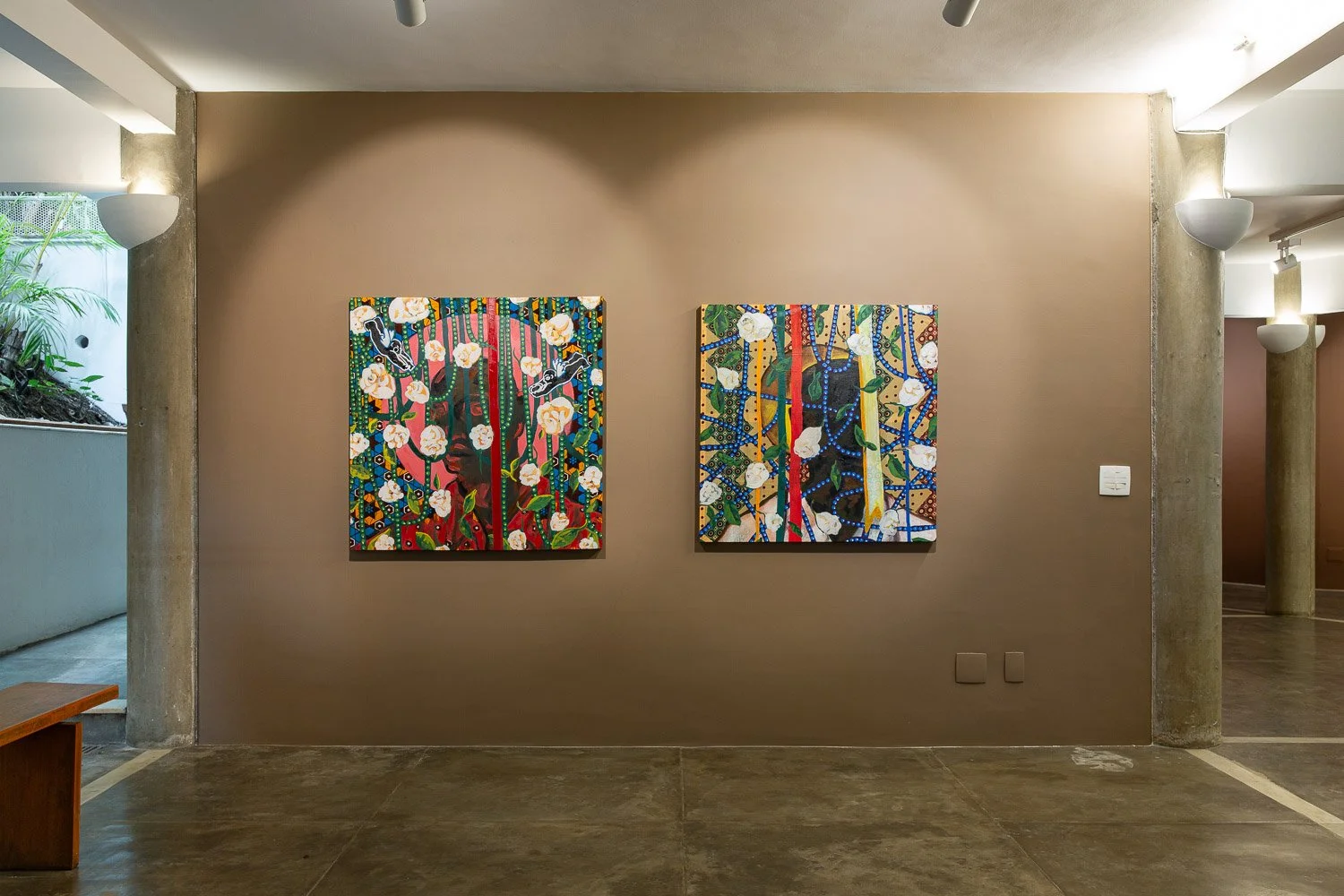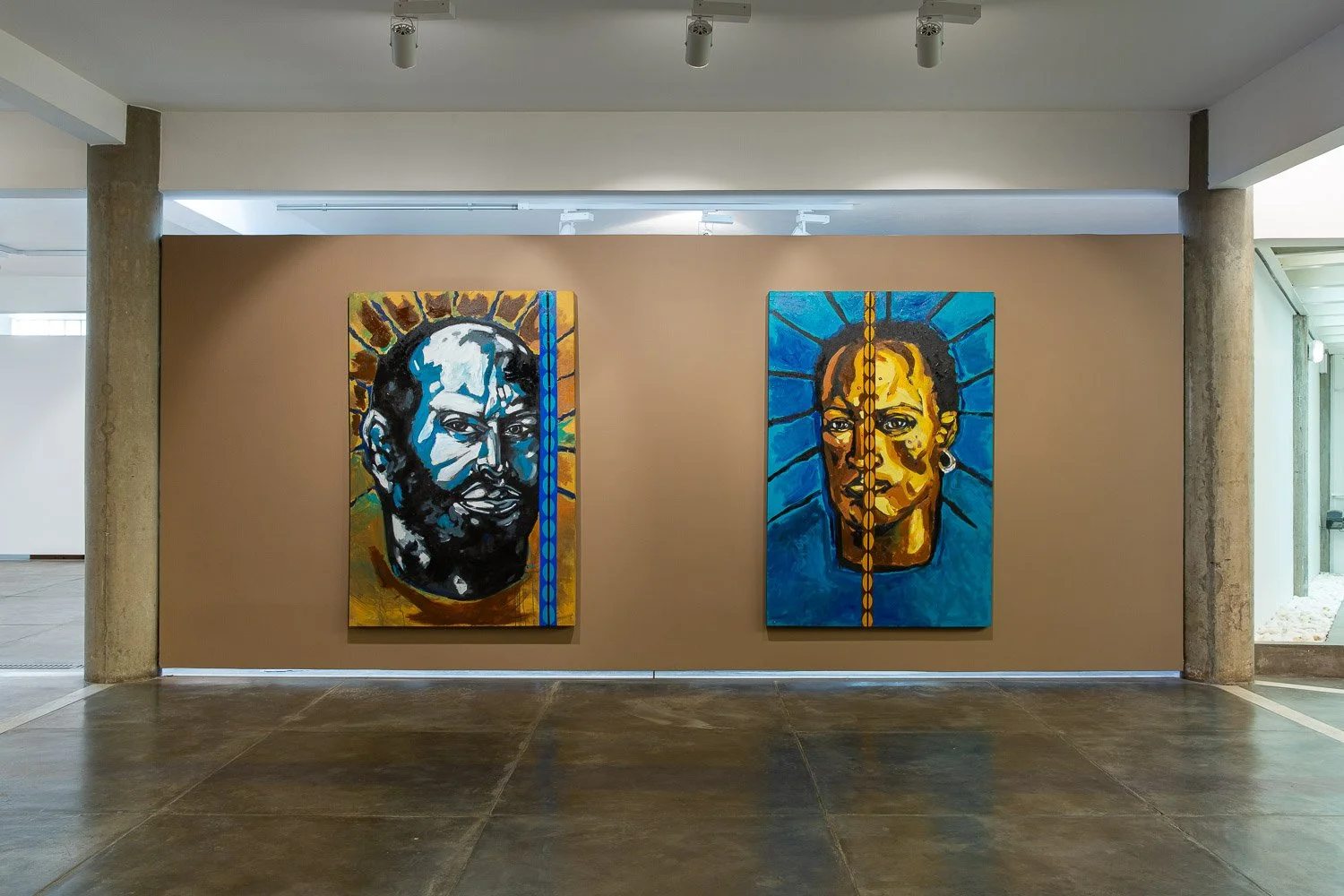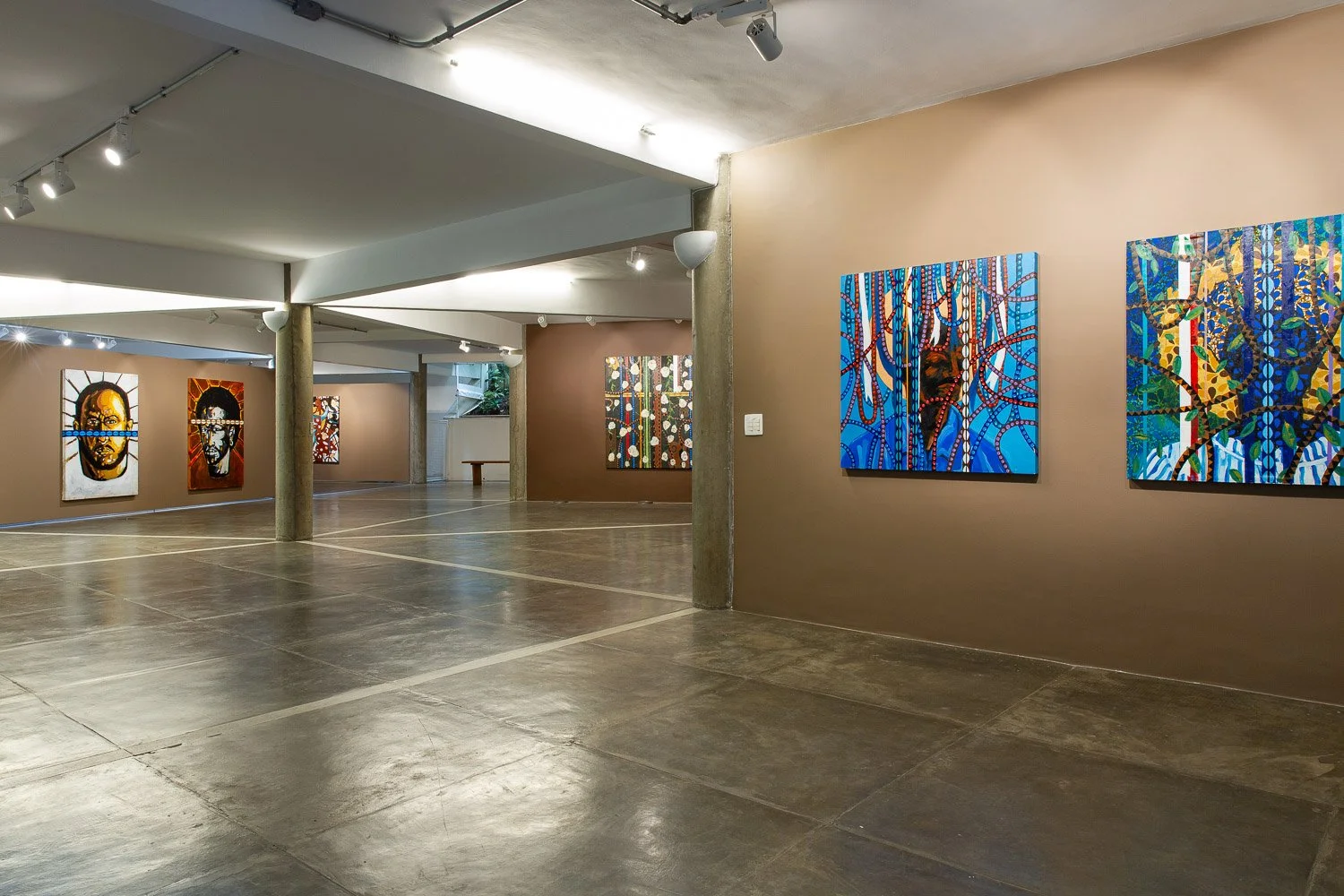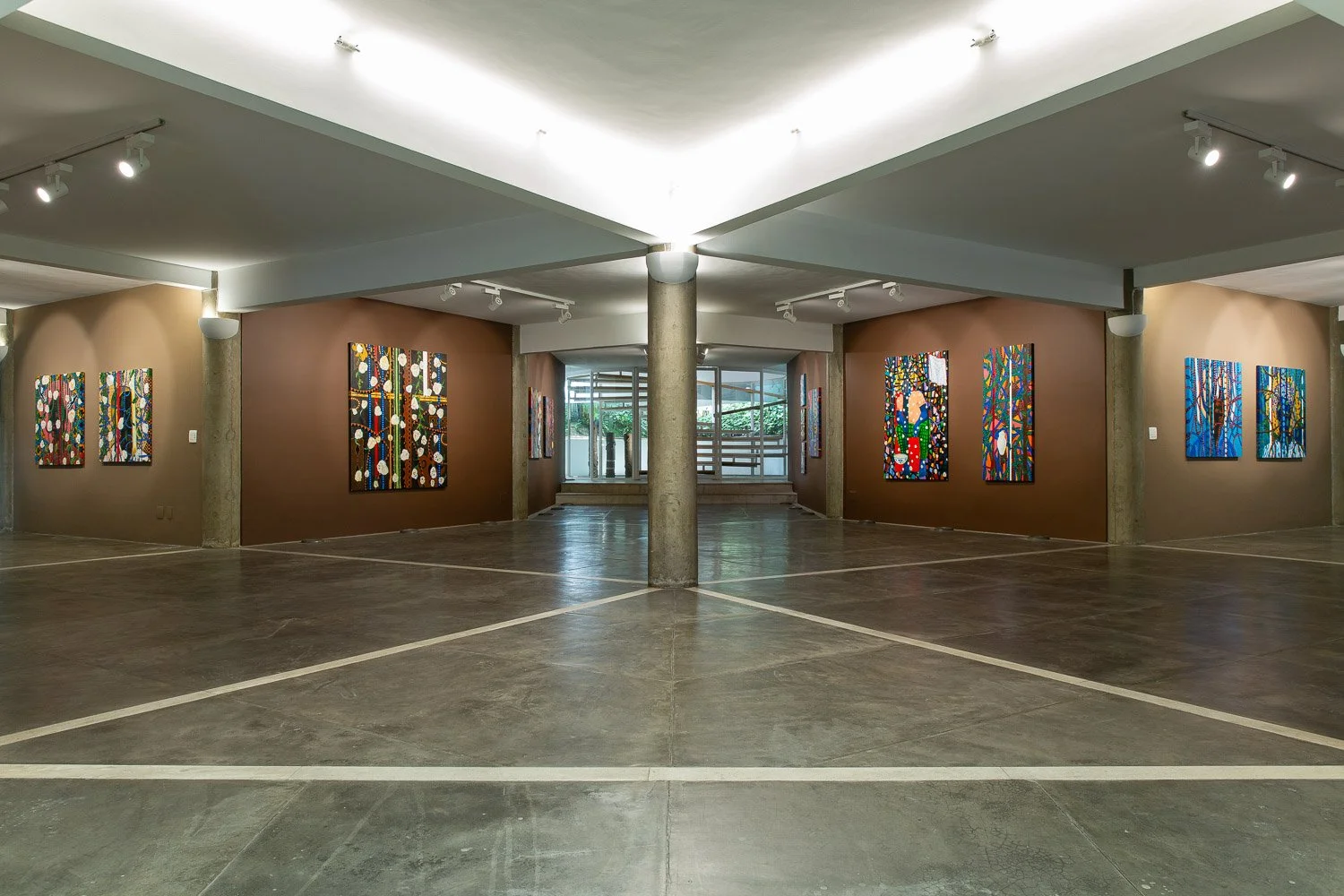
“Fixed Elements, Flows, and Orikis”
RONEY GEORGE
Solo exhibition
Curatorship: Danillo Barata
“Fixed Elements, Flows, and Orikis”
Danillo Barata
The poetics of Roney George emerge as a field of crossings, where body, space, and memory are articulated in a sharing of the sensible. The exhibition proposes a reflection on the continuous transformation of Afro-Brazilian traditions and identities, exploring symbolic continuities and the dynamics of cultural displacements. Here, art is not limited to the materiality of objects, but expands as a living territory where tradition and contemporaneity intertwine in a gesture that reaffirms the creative power of ancestral flows.
The exhibition engages directly with the thought of Abdias do Nascimento, who in Axés do Sangue e da Esperança (Orikis) celebrates ancestral strength by stating: “We are the nocturnal seed of rhythm / the bitter consciousness of pain / blossomed in the beats that herald the perpetuity of living things.” Throughout his 40-year trajectory, Roney George embodies this essence by reaffirming the aesthetic and political power of his references, while exploring new visual grammars that transform art into a field of resistance and self-expression.
His work exists in a dynamic territory, where the interaction between fixed elements—the symbolic continuities of Afro-Indigenous and backlands traditions—and flows—cultural exchanges, displacements, and contemporary reinterpretations—forms a field of continuous re-signification. In dialogue with the thought of Milton Santos, the geography of his art is not limited to the physical landscape, but manifests in the modes of existence and cultural resistance that traverse space, reaffirming art as a mediating instrument between different times and territories.
In his paintings, the signs of the sertão—leather, earth, rough textures, and warm tones—dialogue with elements of the African diaspora, establishing connections between migratory paths, urban spaces, and cultural continuities. His journey, thus, is part of a circuit of displacements and reconfigurations, where the sertão and the city, the past and the present, tradition and contemporaneity meet in a permanent process of transformation, reaffirming art as a field of mediation between territories and temporalities.
A native of Itapetinga, in the southwest of Bahia, Roney George carries in his artistic poetics the marks of the sertão, incorporating in his works the symbolism of caboclos de couro, emblematic figures of backlands and Afro-Indigenous culture. Upon moving to Salvador, the artist broadens his visual and conceptual repertoire, experiencing the complexity of the interactions between sertão and city, articulated by historical processes that shape the Recôncavo of Bahia and its cultural extensions.
His works unfold as continuous processes, in which the environmental dimension, public participation, and Afro-Atlantic history become intrinsic parts of their construction. Inspired by paradigms that value artistic creation as a total experience, the artist translates into his paintings a complex fabric of resistance, memory, and ancestry that constitutes the African diaspora, connecting the past to the urgencies of the present.
The works, while bringing beauty and complexity, also invite reflection as a visual oriki. In them, Roney George’s poetics resonate with the energies of Oxóssi and Obaluaiê, orixás who symbolize wisdom, healing, and resilience. Like Oxóssi, the hunter of paths and forests, Roney explores the trails of Afro-Brazilian ancestry and uses symbolic and geometric elements to capture and preserve cultural memories. The presence of Obaluaiê manifests in the deep layers of his paintings, evoking processes of healing and transformation. Each work is configured as a sacred territory, a spiritual and aesthetic settlement.
In “Fixos, Fluxos e Orikis” (“Fixed Elements, Flows, and Orikis”), we propose a living event where tradition and contemporaneity continuously dialogue, promoting reflections on belonging, memory, and the continuity of Afro-diasporic knowledge.

